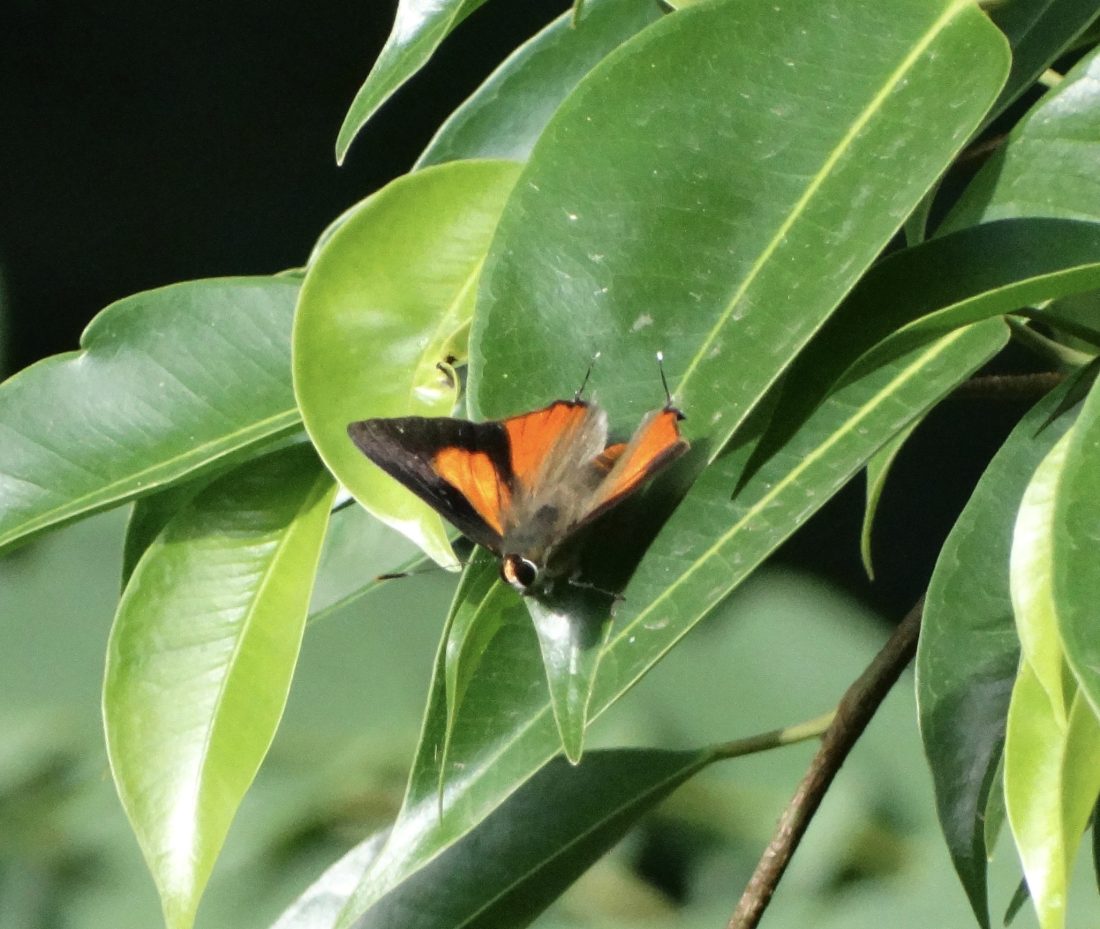On the east side of my apartment block is a large fig tree. In its halcyon days, its canopy covered the length of the balcony, providing shade from the morning sun. At the base of the trunk, an extensive buttress root system had pushed up and cracked the concrete driveway. This made the tree unpopular with the body corporate, but the tree is a protected species in Brisbane under the Natural Assets Local Law of 2003.
For a long time, that law protected the fig, and much else besides. Every spring, the fruit of the tree provided food for mobs of Grey-headed and Black Flying-foxes which chattered and bickered among themselves all night as they gorged themselves. Brush-tailed Possums ran riot. During the day, Australian Figbirds and Koels were regular visitors. The Koels would shriek their heads off at 4am almost every morning through October and November.
There were butterflies, too. When I started taking a serious interest in them, most of my early observations were from my balcony. I identified members of almost all the Australian families: swallowtails (Blue Triangles), whites and yellows (Lemon Migrants), nymphs (Evening Browns, White-banded Planes) skippers and blues (most thrillingly, a Bright Cornelian, which has vivid spots of orange, instead of blue, on the upperwings).

Then in the month of May 2016, right after my marriage broke down, the tree was lopped. Not a branch, nor a leaf remained: just the trunk, which was left to protrude a few metres above ground like an exposed nerve that had been brutally hacked off. It looked how I felt. Sunlight flooded into my apartment. The sudden burst of natural light might have been welcome in other circumstances, but at the time I wanted only the cover of night.
There was no question about why the tree had been lopped. It had a habit of dropping large branches on my neighbours’ roof, particularly during Brisbane’s regular thunderstorms, not to mention huge quantities of leaf litter, which the local Brush Turkeys would determinedly rake through. It would only take one stray spark for that house, a decaying weatherboard which was nearly entirely submerged in the 2011 flood, to go up in a big woof of smoke.
Things were quiet for a long time around here after that. I was pole-axed by grief and feelings of shame, failure and loss. Mostly, I isolated myself, but I also felt abandoned. I missed the thump of possums on the roof and the constant squabble of flying-foxes, which had one less mature tree to feed on and disperse their seeds. Birds and butterflies stayed away. The whole block felt radioactive. So did I.
Thankfully, the body corporate didn’t kill the tree, much less uproot it. That would have meant cutting through a forest of green tape, and cost far more besides. They were doing the minimum that needed to be done for the sake of civic virtue and safety. But it stood outside my flat like a crippled metaphor for my life circa 2016. Still standing, but with no foliage for either decoration or camouflage, much less invite company.
After a while, regrowth began to appear. It was pathetic at first: a few thin branches growing out of the top of the stump, sprouting rebellious leaves. Eventually, they spread around the tree, not enough to attract much that I could see, but enough to provide shelter for the things I couldn’t. I accepted that if ever the fig tree was to return to its earlier glory, it would be in decades to come; long after I’d left the building, possibly in a box.
Then, on Christmas Eve of 2018 – another Christmas by myself – a pair of Bright Cornelians appeared. They were joined by an Orange Palm-dart. I grabbed the camera and snapped a couple of quick shots. I didn’t know it at the time, but within a fortnight everything, in Helen Garner’s words, would begin to heave and change. I’d awoken from my own coma, blinking in the fresh sunlight, and an old friend was about to walk into my life in a new way.
This summer, the fig began to bear fruit again. I can no longer see the trunk for the foliage, and the flying-foxes are swinging. A Koel found enough cover to hide (and scream) in. A couple of weeks ago, I was drawn out to the balcony by a gaggle of squawking, pointing Blue-faced Honeyeaters, Noisy Miners and a Grey Butcherbird, and saw a young Carpet Python snaking its way up the tree. Judging by the occasional racket since, it’s still there.
Today I stood on the balcony having a long conversation on the phone with my brother. While we were talking, I watched. A migration of Blue Tiger butterflies was in full swing, and another species, a Varied Eggfly, was dancing in the understory. I suddenly became curious about the identity of the fig. I’d never paid attention to botanical matters, despite my mother having been an obsessive gardener.
The leaves were now just close enough to the balcony for me to reach between the louvres and pull one from its stem, which immediately extruded a thick white sap. The leaf was glossy and smooth and very dark green, rounded at the base, tapering to a fine tip. It is a weeping fig, Ficus benjamina. I had, I decided, taken it for granted, and much else besides. The creatures I loved were coming back, but there was more going on outside my window than I ever realised.
First published on my Patreon page, 29 February 2020; reprinted in the Guardian, 22 March 2020